LINE ID japanroyalservice
+817013781777 click here
+817013781777 click here
LINE ID japanroyalservice
+817013781777 click here
+817013781777 click here
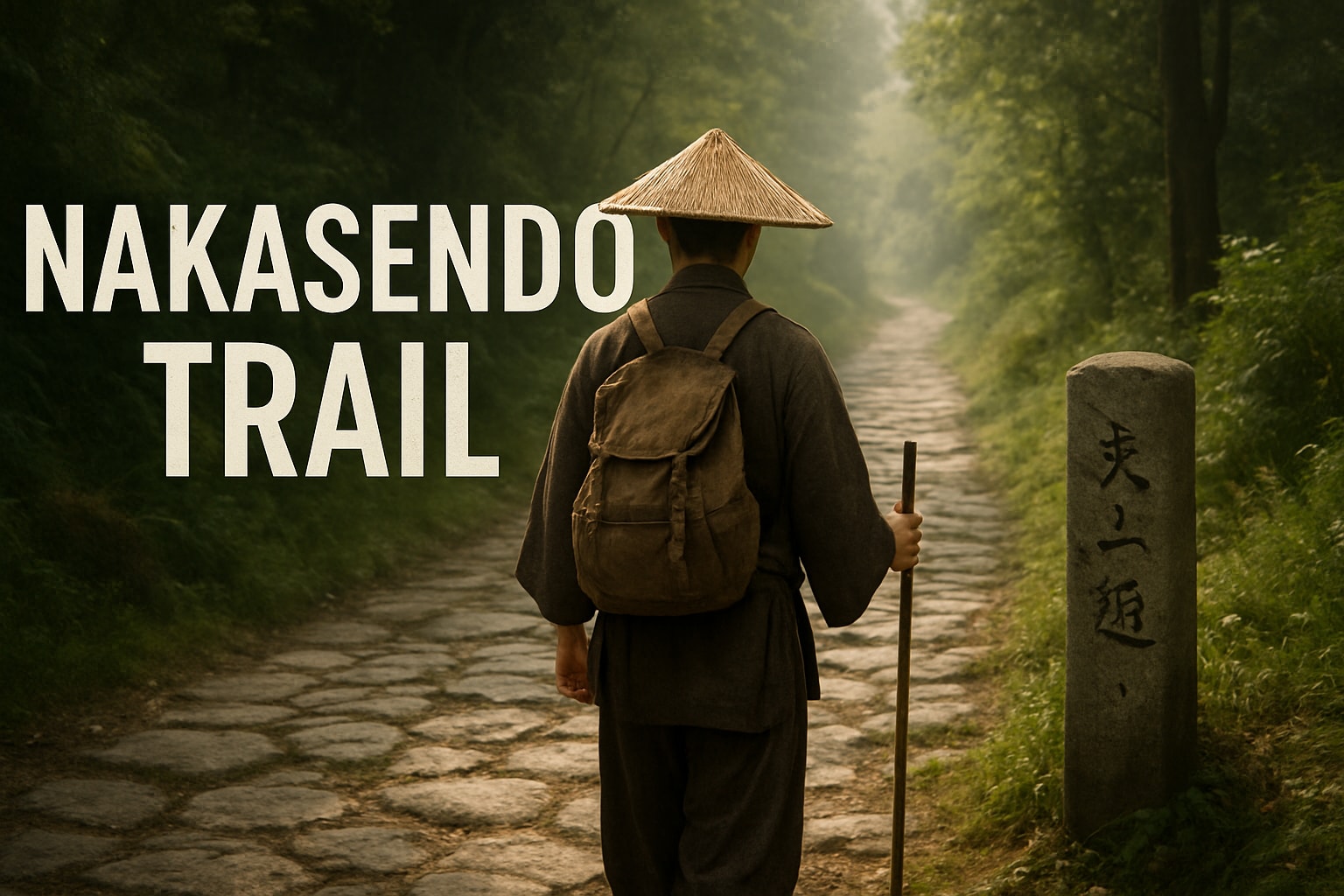
Step back in time and discover the nakasendo trail, a legendary route where samurai once walked and history lives on in every stone. This ancient path offers an immersive journey through Japan’s heart, blending breathtaking mountain scenery with the preserved charm of Edo-period towns.
Our 2025 guide reveals everything you need to know to explore the nakasendo trail, from practical planning and historical insights to must-see post towns and authentic cultural experiences. Whether you seek seasonal beauty, detailed route advice, or luxury touches, this resource is designed to inspire and inform.
Ready to begin your adventure? Let us help you unlock the secrets of the nakasendo trail and create a journey you will never forget.
Step into the world of the nakasendo trail, where every stone and timber whispers stories of Japan’s dynamic past. This ancient path, winding through the heart of the country, seamlessly blends historical depth, scenic beauty, and living tradition. As you explore its legacy, you are invited to connect with a journey that shaped modern Japan and continues to inspire travelers today.
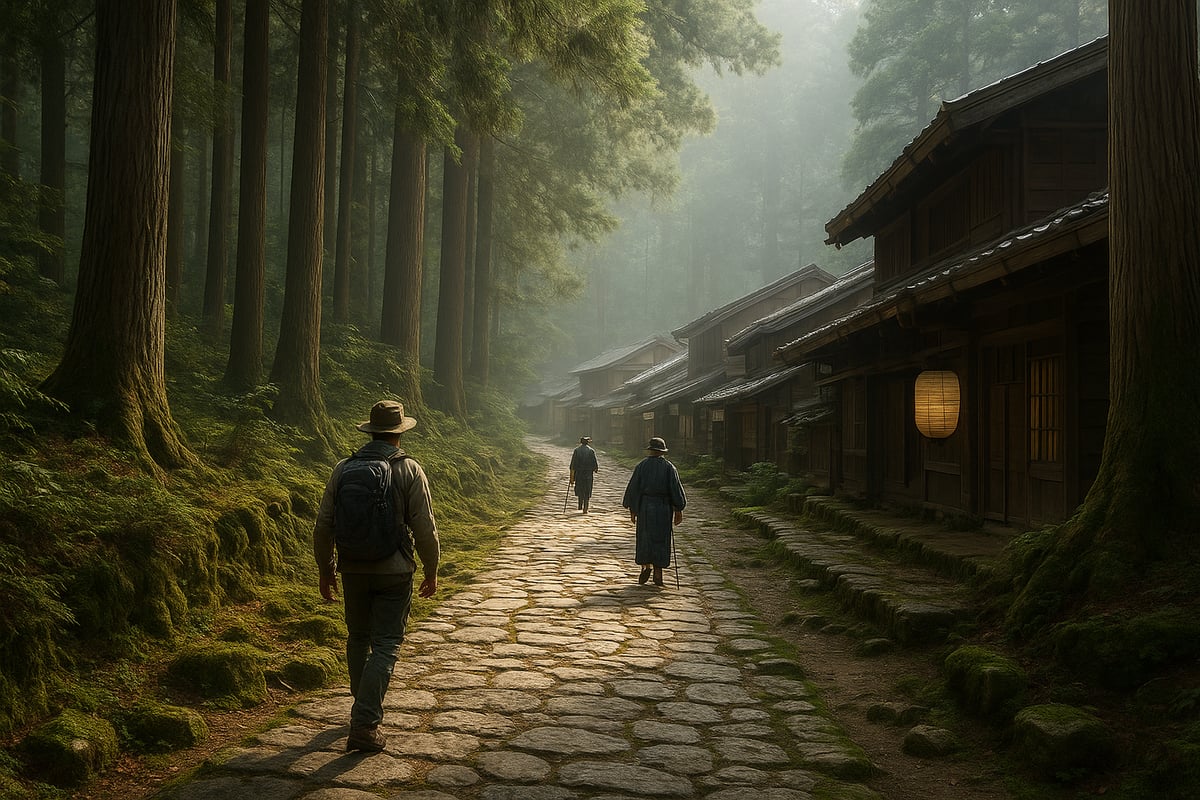
The nakasendo trail was established during Japan’s Edo period as one of five key routes linking Edo (now Tokyo) and Kyoto. Its name translates to “Central Mountain Route,” reflecting its path through mountainous terrain. The trail served as a vital artery for daimyo, merchants, and travelers, weaving political and economic connections across Japan.
Sixty-nine post towns, including Tsumago and Magome, provided rest, security, and commerce along its 540 km (340 miles) stretch. These towns, many still beautifully preserved, showcase authentic Edo-era architecture. The nakasendo trail was not just a road but a powerful tool for centralized control and cultural exchange, shaping the regions it connected. For a deeper look at its historical roots, see this Nakasendo Trail’s Historical Significance.
The nakasendo trail’s influence endures in Japanese art, literature, and national identity. Artists and poets immortalized its landscapes, while travelers chronicled their experiences in diaries and prints. In recent decades, the trail has experienced a revival as a heritage walking route, celebrated for its authentic “slow travel” ethos.
Communities and government have worked tirelessly to preserve historic post towns. Narai-juku, for example, is a designated National Important Preservation District. International visitors are increasingly drawn to the nakasendo trail, seeking immersive cultural experiences and a tangible link to Japan’s past. Visitor numbers continue to rise, especially in iconic sections like Tsumago-Magome.
The nakasendo trail is alive with legends and tales of adventure. Folklore tells of samurai, such as the famed Miyamoto Musashi, who traversed sites like the Odaki and Medaki waterfalls. Unique architectural features, like the masugata—right-angled street bends—were ingeniously designed for security against bandits.
Travelers and historical figures left behind anecdotes of stays at honjin inns, exclusive lodgings for feudal lords and officials. Every post town reveals stories that transform the nakasendo trail into a living museum, offering glimpses into the daily life, struggles, and hospitality of Edo-period Japan.
The nakasendo trail continues to evolve, with recent restoration projects enhancing its charm. Improved multilingual signage and updated maps now make navigation easier for international visitors. Digital resources and mobile apps offer real-time guidance and historical insights.
Efforts to support sustainable tourism are more prominent, focusing on protecting the trail’s heritage and managing increased crowds. As you plan your 2025 adventure, expect more accessible, informative, and enriching experiences along the nakasendo trail, ensuring its legacy lives on for future generations.
Embarking on the nakasendo trail is both an adventure and a journey through Japan’s living history. Careful planning ensures a seamless experience, letting you focus on the trail’s beauty, culture, and unique moments.
Timing your nakasendo trail walk is essential for comfort and scenery. Spring (April to May) brings cherry blossoms and mild weather, making it a favorite season. Autumn (October to November) transforms the forests with vibrant foliage, perfect for photography.
Summer can be hot and humid, with a chance of rain or typhoons. Winter offers a quiet, snow-dusted trail, but requires proper gear and preparation. For fewer crowds, avoid national holidays and weekends. Many visitors find the lush landscapes after summer rains both beautiful and challenging, so check forecasts and plan accordingly.
The nakasendo trail stretches from Tokyo to Kyoto, but most travelers focus on scenic segments. The Magome to Tsumago route, around 8 kilometers, is ideal for first-timers seeking highlights and manageable distances.
For solitude, consider the Yabuhara to Narai section, which reveals quieter post towns and authentic atmospheres. Magome to Nakatsugawa offers a longer extension with rural scenery. Train and bus access is convenient from cities like Nagoya and Matsumoto, making it easy to customize your journey.
No special permits are needed to hike the nakasendo trail, making spontaneous adventures possible. However, stop by local tourist centers in Magome or Tsumago for detailed trail maps and up-to-date advice.
Many travelers download PDF maps and post town guides before arrival. While the trail is generally well-marked, some signs are only in Japanese. Carry backup navigation tools such as Google Maps or a physical map for peace of mind. Free digital resources can be invaluable for planning and on-trail orientation.
Success on the nakasendo trail starts with smart packing. Bring sturdy walking shoes, a rain cover, insect repellent, and a lightweight backpack for essentials. Weather can change quickly, so pack layers suited to the season.
Luggage forwarding (takuhaibin) services allow you to hike hands-free between post towns. Book your accommodations in advance, especially during peak travel periods. Always check the weather forecast and adjust your gear to ensure a safe and enjoyable experience.
For those seeking a truly elevated nakasendo trail adventure, Japan Royal Service offers tailored luxury experiences. Enjoy private guided walks, luxury transportation, and exclusive access to cultural events and premium accommodations.
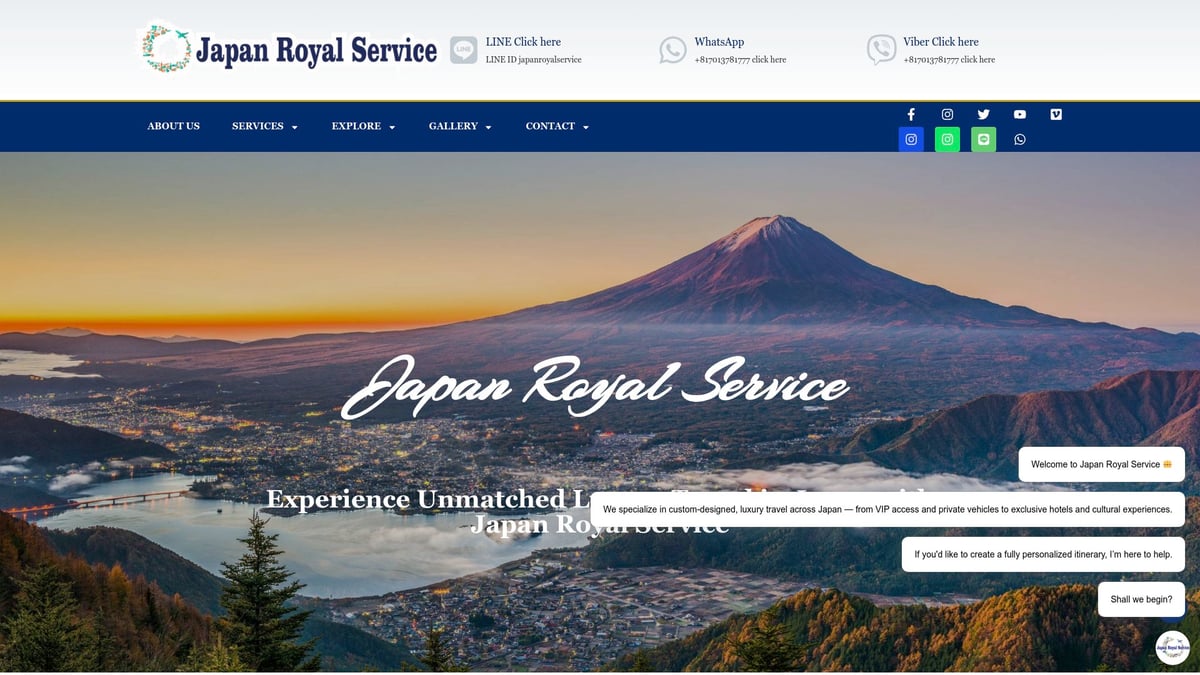
These bespoke services ensure your journey is seamless and deeply immersive, providing insight and comfort at every step. Whether you desire a curated itinerary or access to hidden gems, personalized planning transforms your Nakasendo walk into an unforgettable exploration of Japan’s heritage.
Embarking on the nakasendo trail in 2025 offers a seamless blend of adventure, history, and culture. Whether you’re a seasoned trekker or a cultural explorer, this guide breaks down each phase of the journey, ensuring you make the most of every step along Japan’s legendary route.
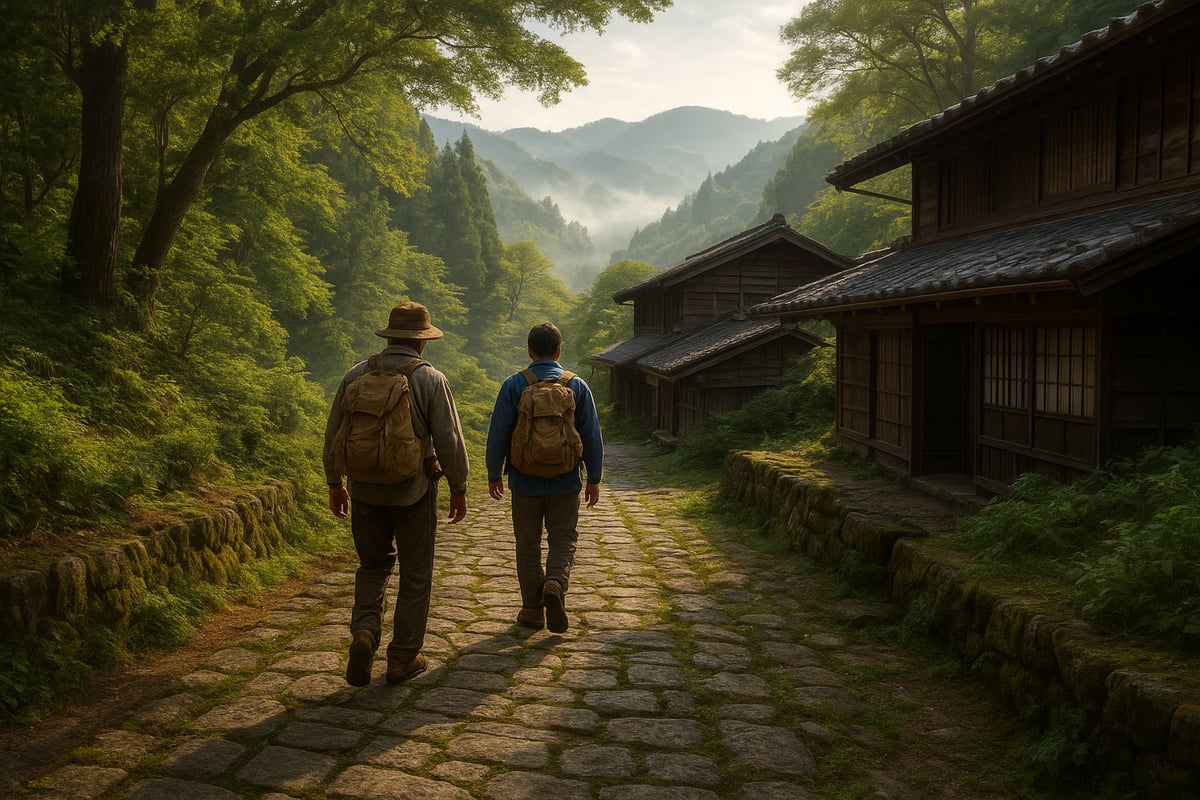
Reaching the nakasendo trail is straightforward with Japan’s efficient rail network. The primary gateways are Nagiso Station for Tsumago, Nakatsugawa Station for Magome, and Yabuhara Station for Narai. These stations are easily accessible from major cities like Tokyo, Nagoya, Kyoto, and Matsumoto.
When traveling from Tokyo or Kyoto, take the JR Chuo Line or Limited Express Shinano to reach Nagoya, then transfer to local trains. IC cards may not be accepted on some rural lines, so purchasing paper tickets in advance is wise. For those starting in Magome, transfer at Kanayama Station to the Chuo Line bound for Nakatsugawa Station. From there, local buses or taxis can take you directly to the trailhead.
If you’re starting in Tsumago, take a bus from Nagiso Station. For more remote areas, taxis offer door-to-door convenience. Always check train and bus schedules ahead of time, as rural services may be infrequent. The nakasendo trail’s accessibility allows travelers to tailor their journey to fit personal preferences and time constraints.
The most iconic stretch of the nakasendo trail runs 8 kilometers between Magome and Tsumago. This segment immerses you in a landscape of dense forests, cascading waterfalls, and beautifully preserved Edo-era post towns. The path is moderately challenging, with gentle ascents and descents, suitable for most hikers.
Highlights along this section include:
As you walk, you’ll encounter masugata, or right-angled roads, designed for historical security. Stop for lunch at a local café or visit the Tsumago History Museum to deepen your understanding of the region’s heritage. The trail is well-marked, though some signs are in Japanese, so carrying a physical map or digital navigation tool is recommended.
For a comprehensive look at these historic post towns and their unique attractions, consider reviewing Exploring Nakasendo’s Post Towns. Arriving early helps you enjoy quieter paths, as both Magome and Tsumago tend to close by late afternoon, preserving their tranquil atmosphere.
Tsumago is a living museum on the nakasendo trail. The moment you enter, the water wheel at the gateway sets a tone of authenticity and serenity. The town has banned visible power lines and cars, maintaining a true Edo-period ambiance.
Must-see attractions include:
Tsumago’s tourist information center is friendly and helpful, offering maps and advice in multiple languages. Clean public restrooms are conveniently located throughout. Culinary highlights feature traditional galettes and handmade soba noodles, as well as seasonal treats found in cozy tea houses. The unique masugata street layout, with its right-angled turns, provides both historical intrigue and practical security.
The nakasendo trail can be experienced in either direction between Tsumago and Magome. Walking from Tsumago to Magome involves a gradual ascent, offering panoramic valley views and tranquil bamboo groves. This direction is popular with those seeking a slightly more challenging trek.
Key highlights include:
The distance is approximately 7.7 kilometers, typically taking two to three hours to complete. Both directions of the trail are well-maintained, with rest stops and scenic points encouraging travelers to pause and absorb the landscape. The nakasendo trail’s flexibility allows you to customize your walk based on interest and endurance.
Magome is the vibrant gateway to the Kiso Valley and a highlight of the nakasendo trail. Its main street, steep and lined with traditional shops, invites exploration at a leisurely pace. The rhythmic sound of water wheels, paired with sweeping views of the surrounding mountains, creates a memorable backdrop.
Explore:
Magome’s architecture and atmosphere transport visitors to a bygone era. The town’s dedication to preservation ensures an immersive, authentic experience. Booking a night at a local inn enhances your journey, offering the chance to savor multi-course kaiseki meals and relax in serene surroundings.
For those seeking to extend their nakasendo trail adventure, the 8.1 kilometer walk from Magome to Nakatsugawa offers a quieter, scenic route. This segment passes through Ochiai, where cobblestone paths wind between rice fields and restored post town buildings.
Highlights of this extension include:
This final stretch is perfect for travelers looking to deepen their connection with rural Japan and explore lesser-known corners of the nakasendo trail.
Walking the nakasendo trail is like stepping into a living museum. Each post town along the route offers a different glimpse into Japan’s Edo-period heritage, blending scenic beauty and cultural immersion. Let’s explore the highlights that await you.
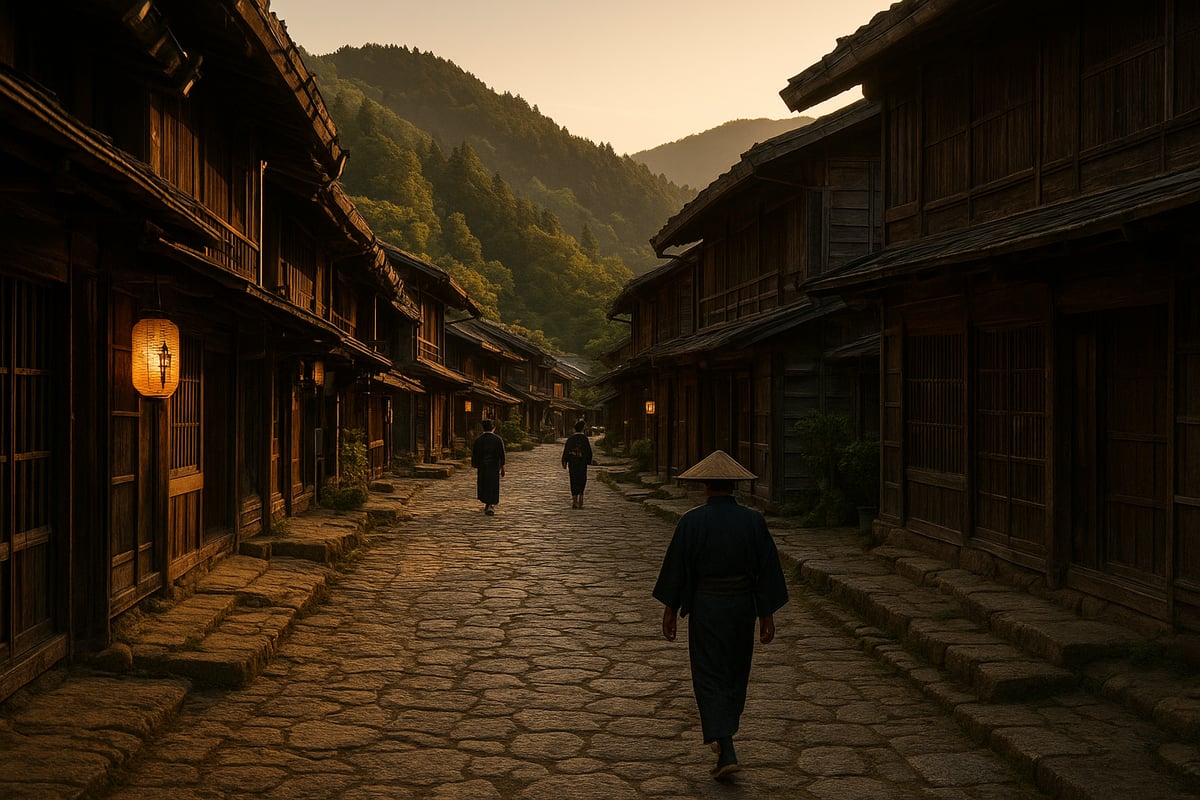
Tsumago is a crown jewel of the nakasendo trail, renowned for its pristine preservation. Here, modern distractions fade away—there are no power lines or cars, just the gentle rhythm of daily life as it was centuries ago.
Strolling through Tsumago, you’ll find:
Friendly residents welcome travelers, and clear signage (in Japanese and English) helps you navigate. Tsumago’s community was pivotal in protecting the nakasendo trail’s legacy, making it a model for heritage conservation in Japan.
Magome marks the dramatic entrance to the Kiso Valley section of the nakasendo trail. Its main street climbs steeply, lined with traditional inns, quaint shops, and lively cafes.
Key features include:
Magome is a photographer’s paradise, with historic markers and scenic corners at every turn. Guest House Motomiya is a favorite for those seeking authentic hospitality and regional cuisine. After sunset, the village quiets, offering a rare chance to experience the nakasendo trail’s timeless atmosphere.
Narai-juku, often called “Narai of a Thousand Houses,” is a less-traveled highlight of the nakasendo trail. Its perfectly preserved wooden buildings stretch for over a kilometer, creating an immersive, tranquil setting.
Here, visitors can:
Narai-juku is ideal for travelers seeking authenticity and solitude. For deeper insight into the cultural experiences available, explore Cultural Experiences on the Nakasendo Trail, which details immersive stays, local cuisine, and historical sites along the nakasendo trail.
Ochiai blends old and new, with cobblestone paths winding past both historical and modern structures. Other nearby towns like Yabuhara and Kiso-Fukushima offer peaceful retreats and genuine encounters with rural Japan.
These quieter stops let you enjoy:
Each post town along the nakasendo trail adds its own story to your journey, making the adventure both rich and unforgettable.
Embarking on the nakasendo trail requires thoughtful planning to ensure a comfortable and memorable journey. From securing a cozy place to stay to savoring local flavors and navigating the scenic route, these practical tips will help you make the most of your adventure.
Securing accommodation along the nakasendo trail is essential, especially during peak seasons like spring and autumn. Traditional ryokan, minshuku, and modern hotels are available in most post towns, but rooms can book up quickly. Early planning is key, as many inns offer packages including dinner and breakfast—an excellent way to experience regional hospitality.
Luggage forwarding services allow you to hike light and enjoy the route without heavy packs. Booking platforms such as Booking.com are reliable, but it is also worthwhile to check with local tourism sites for availability and updates. For those interested in exploring more of the region, Exploring Nagano and Niigata regions provides valuable insights into nearby destinations and lodging options. Always confirm your reservations in advance to avoid last-minute surprises along the nakasendo trail.
Dining on the nakasendo trail is an experience in itself. Savor regional specialties such as soba noodles, gohei-mochi, and mountain vegetables at local cafes and inns. Most eateries close early, so plan your meals ahead and take advantage of set menus offered by your accommodation.
Seasonal treats and special summer foods are highlighted in post towns; for inspiration, explore Summer Highlights on the Nakasendo Trail to discover festivals and culinary delights unique to this historic path. Enjoying traditional cuisine is a highlight of any nakasendo trail adventure.
Safety on the nakasendo trail is enhanced by well-marked paths, though some signage may only be in Japanese. Always carry water, snacks, and weather-appropriate clothing, as conditions can change rapidly. Respect local customs—walk quietly, avoid littering, and greet fellow hikers warmly.
Cobblestone and forest paths become slippery when wet, so wear sturdy shoes and use caution during rainy weather. Following these guidelines ensures a respectful and safe journey for everyone on the nakasendo trail.
Navigating the nakasendo trail is straightforward with a mix of digital and physical resources. Download offline maps and trail guides before setting out, as cell service is limited in remote areas. Tourist information centers in key post towns offer free pamphlets and updated advice.
Backup navigation tools, like a printed map, are recommended. Staying informed and connected will help you focus on the beauty and history of the nakasendo trail while minimizing travel stress.
Embarking on the nakasendo trail opens doors to a tapestry of history and living culture. Each step invites you not only to witness Japan’s scenic beauty but also to engage with age-old traditions, responsible travel, and new adventures beyond the well-trodden path.
The nakasendo trail is more than a historical route, it is a living stage for Japan’s vibrant culture. Travelers can participate in local festivals, witness traditional performances, or join a tea ceremony in an atmospheric inn. Many post towns, such as Narai-juku and Magome, offer hands-on craft workshops and seasonal celebrations, giving visitors a chance to connect with the community.
In spring and autumn, the trail comes alive with festivals and events that showcase regional music, dance, and cuisine. For those seeking deeper immersion, consider exploring Traditional Japanese cultural experiences available in these towns. These activities range from calligraphy lessons to kimono dressing, allowing you to create lasting memories while supporting local artisans.
Attending a festival in Narai-juku or Magome is a highlight, offering a glimpse into the customs that have shaped this region for centuries.
Walking the nakasendo trail also means embracing responsible tourism. Choose to stay in family-run inns, enjoy meals prepared with regional ingredients, and purchase locally crafted goods. Simple actions, such as carrying out your trash and respecting quiet hours, help preserve the serenity of each post town.
Support preservation efforts by learning about the area’s heritage before you visit. Practice Leave No Trace principles and encourage others to do the same. Your mindful travel choices directly contribute to the long-term vitality and authenticity of the nakasendo trail for future generations.
Once you have explored the heart of the nakasendo trail, consider broadening your journey. Combine your walk with other heritage routes such as the Kumano Kodo, or visit nearby destinations like Matsumoto Castle and the Kiso Valley. Multi-day itineraries allow you to experience even more of Japan’s natural and cultural wonders.
Whether you seek solitude on quiet stretches or wish to join guided tours, the nakasendo trail offers endless opportunities for enrichment. With careful planning, your adventure can capture the spirit of Edo-period travelers while embracing the comforts and insights of modern exploration.
After discovering the rich history, cultural treasures, and timeless beauty of the Nakasendo Trail, you may feel inspired to experience its magic for yourself—at your own pace and with every detail perfectly tailored. Imagine journeying the same scenic paths as samurai, with seamless logistics, luxury touches, and exclusive access to hidden gems along the way. If you’re ready to elevate your adventure and create memories as unique as the trail itself, let’s bring your vision to life together.
Elevate your travel story: Speak with a Japan specialist and tailor your adventure.